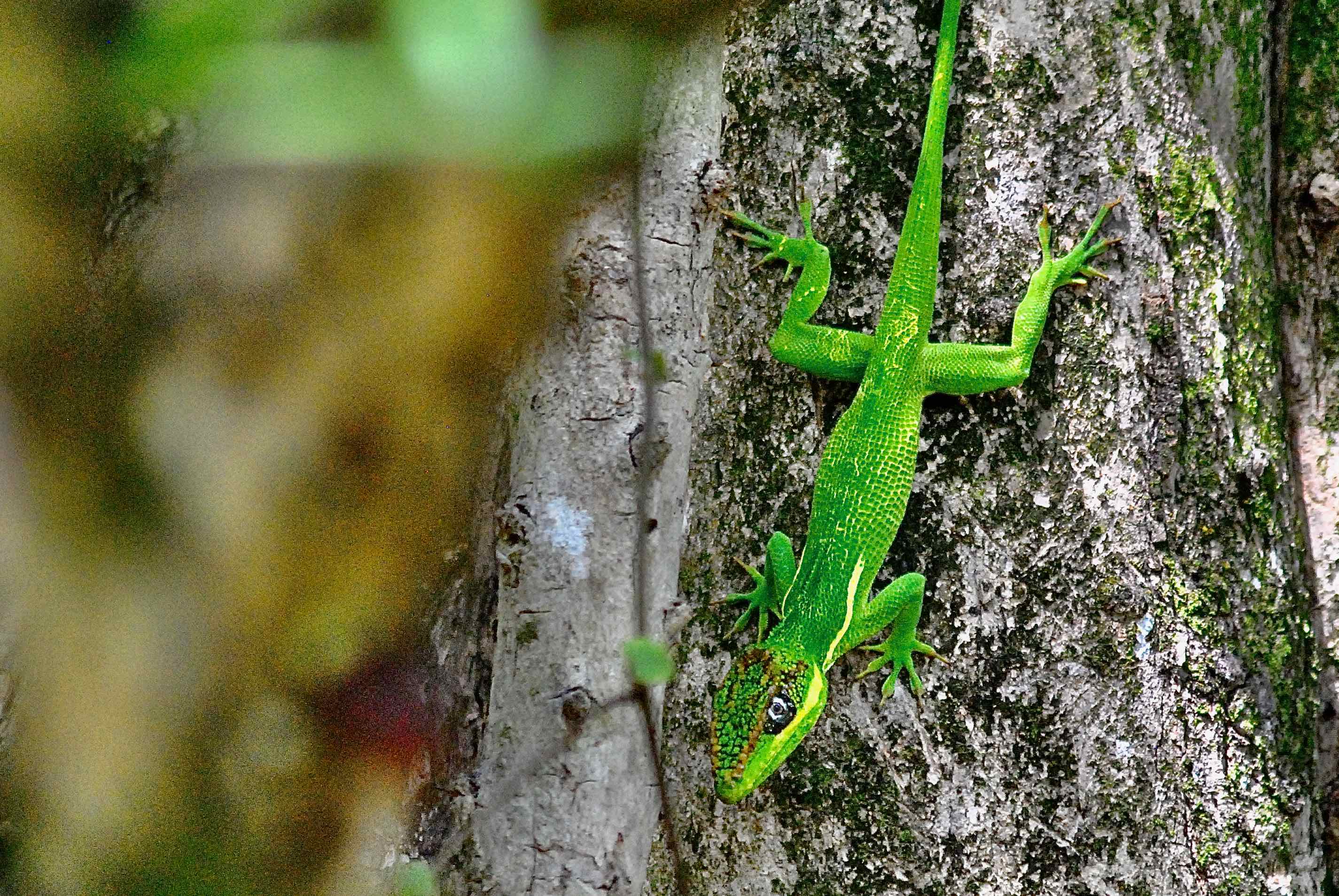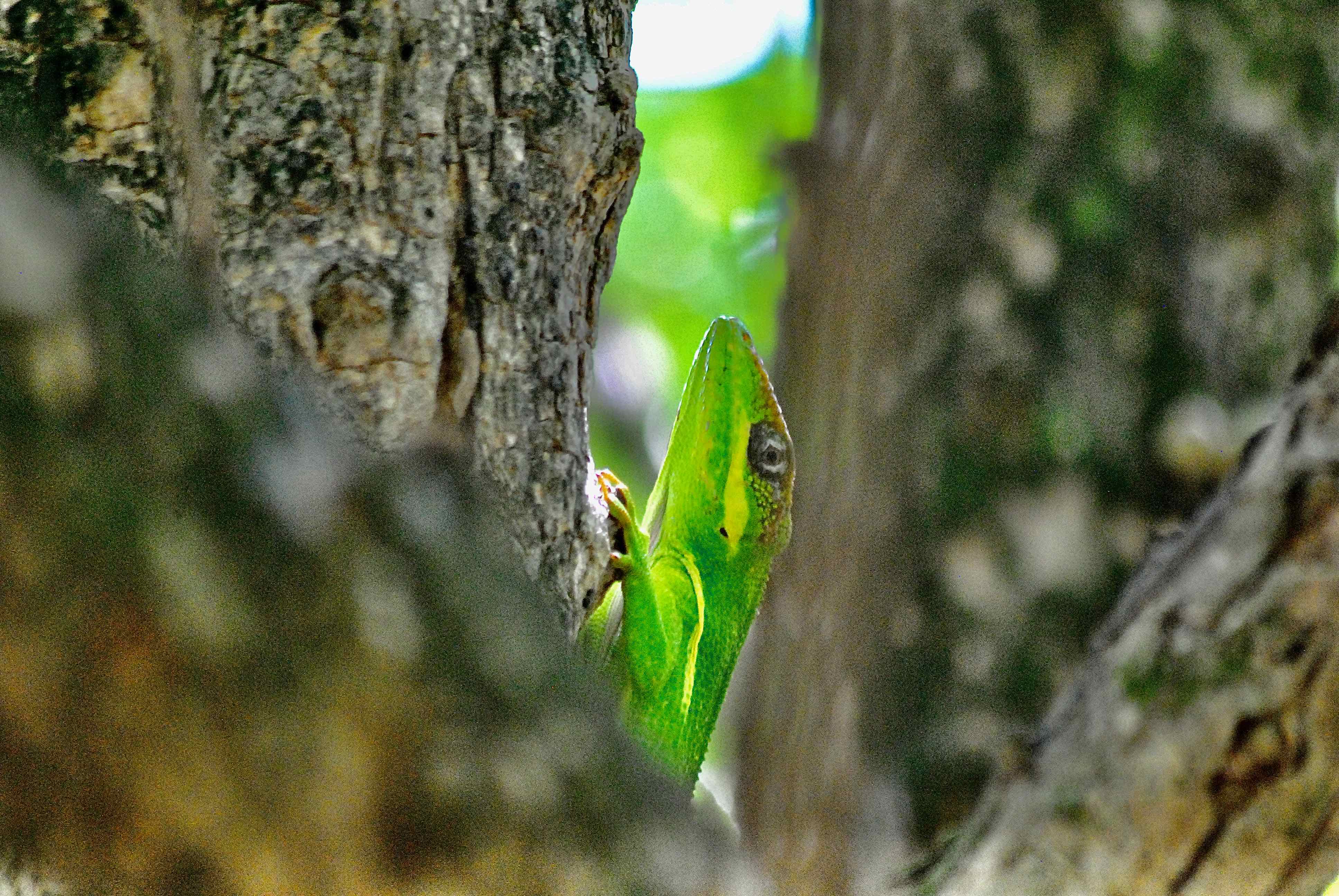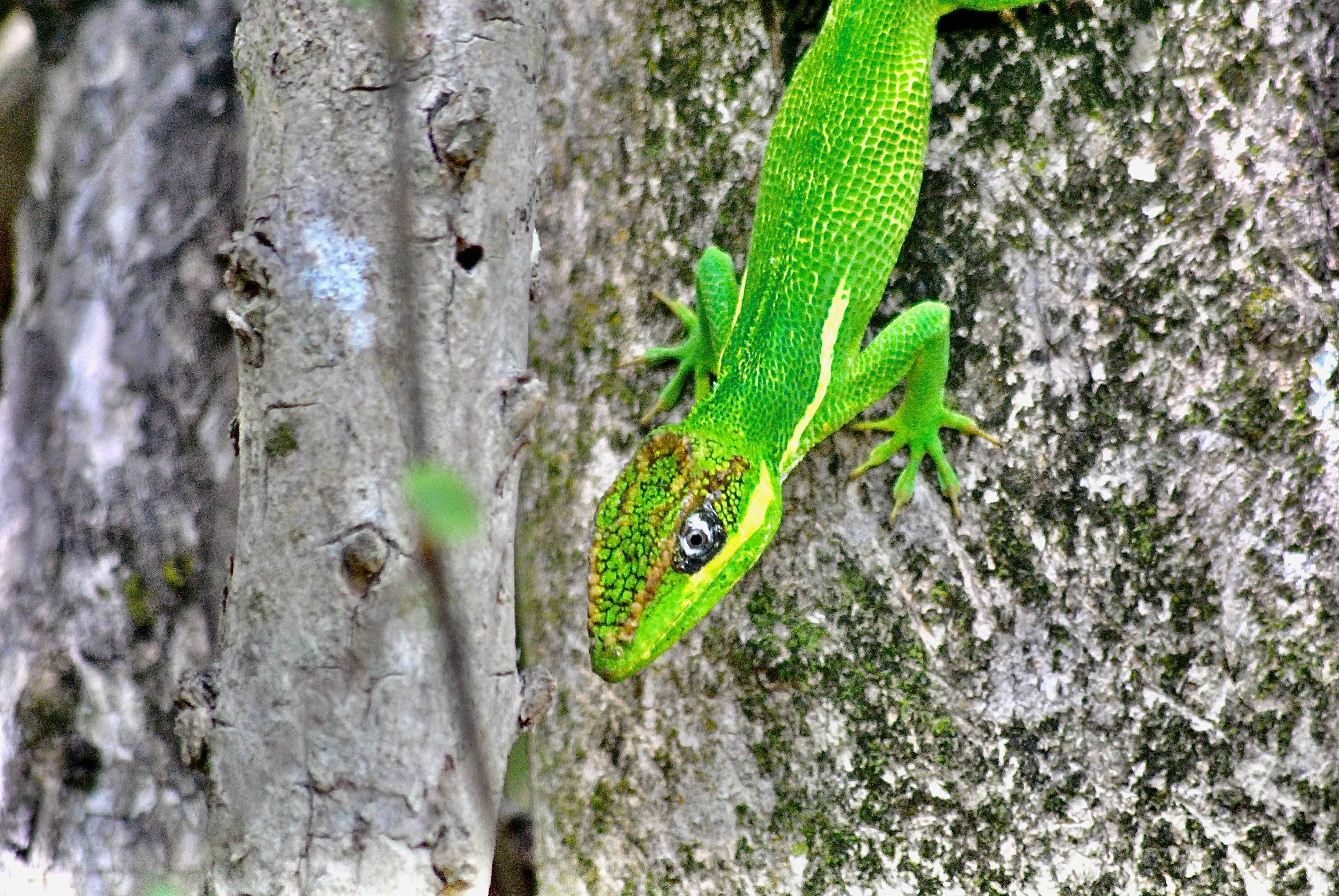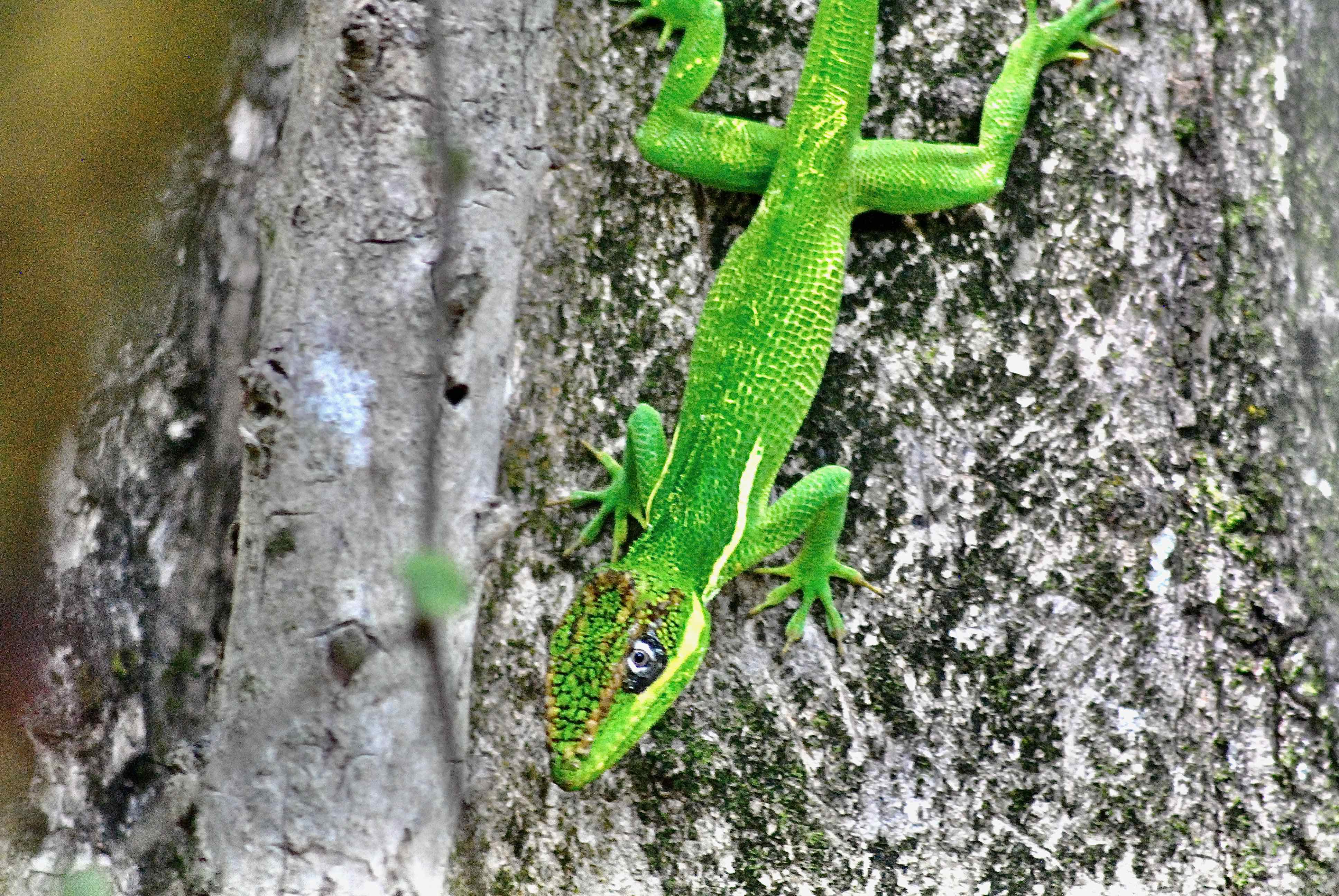
Knight anole, photographed at Tropical Fruit and Spice Park, Redlands, Miami-Dade County, in July 2015.
The knight anole, Anolis equestris, might look like a miniturized iguana. In fact, some call it the iguanito. But it's more closely related to those ubiquitous little brown lizards running around South Florida (called brown anoles) than it is to the iguana.
Part of the reason for the confusion is A) the bright green color of the knight anole and B) its sheer size. Although it's much smaller than an iguana, it's much larger than any other anole (there is a native green anole), as much as four times larger.
It is an import. Its native range includes Cuba. According to the Florida Fish and Wildlife Conservation Commission, the knight anole made its way across the Florida Straits to South Miami in 1952. It's been spotted in 11 counties, although not breeding in the northern most. We're guessing cold weather is the limiting factor. How it got here is anybody's guess. Could have been through the pet trade or a few might have hitchhiked the distance on a boat, theories used to explain the presence of most of Florida's exotic lizards.
Both sexes are bright green, with a black eye patch and bright yellow bars under the eye and on the shoulder. Knight anoles can reach 20 inches long, while a male brown anole — another import — might reach a maximum of eight inches.
The most apparent difference between male and female knight anoles is the pink, expandable sac on the throat called a dewlap that males have, and use in display. Both sexes typically sit on tree trunks head facing down a few yards from the ground. They can turn brown or black when cold or afraid.
The problem with imports like the knight anole is that they take resources on which native animals rely — habitat and food, for example. The knight not only displaces natives, such as the green anole, they make natives part of their diet. Knight anoles also dine on frogs, bugs, fruit and even nesting birds.
Knight anoles are slower than other lizards but are more likely to stand their ground when they perceive a threat. And they do bite.
Females mate once a year but will produce as many as four clutches of one or two eggs. Knight anoles are fairly long-lived creatures, capable of reaching 15 or 16 years and averaging about eight.
They are members of the iguana family, Iguanidae.
By the way, according to the FWC there are breeding populations throughout South Florida as far north as St. Lucie County. Lee County is an exception.



